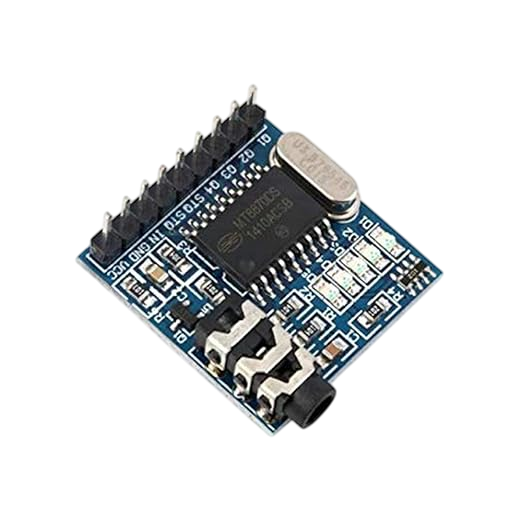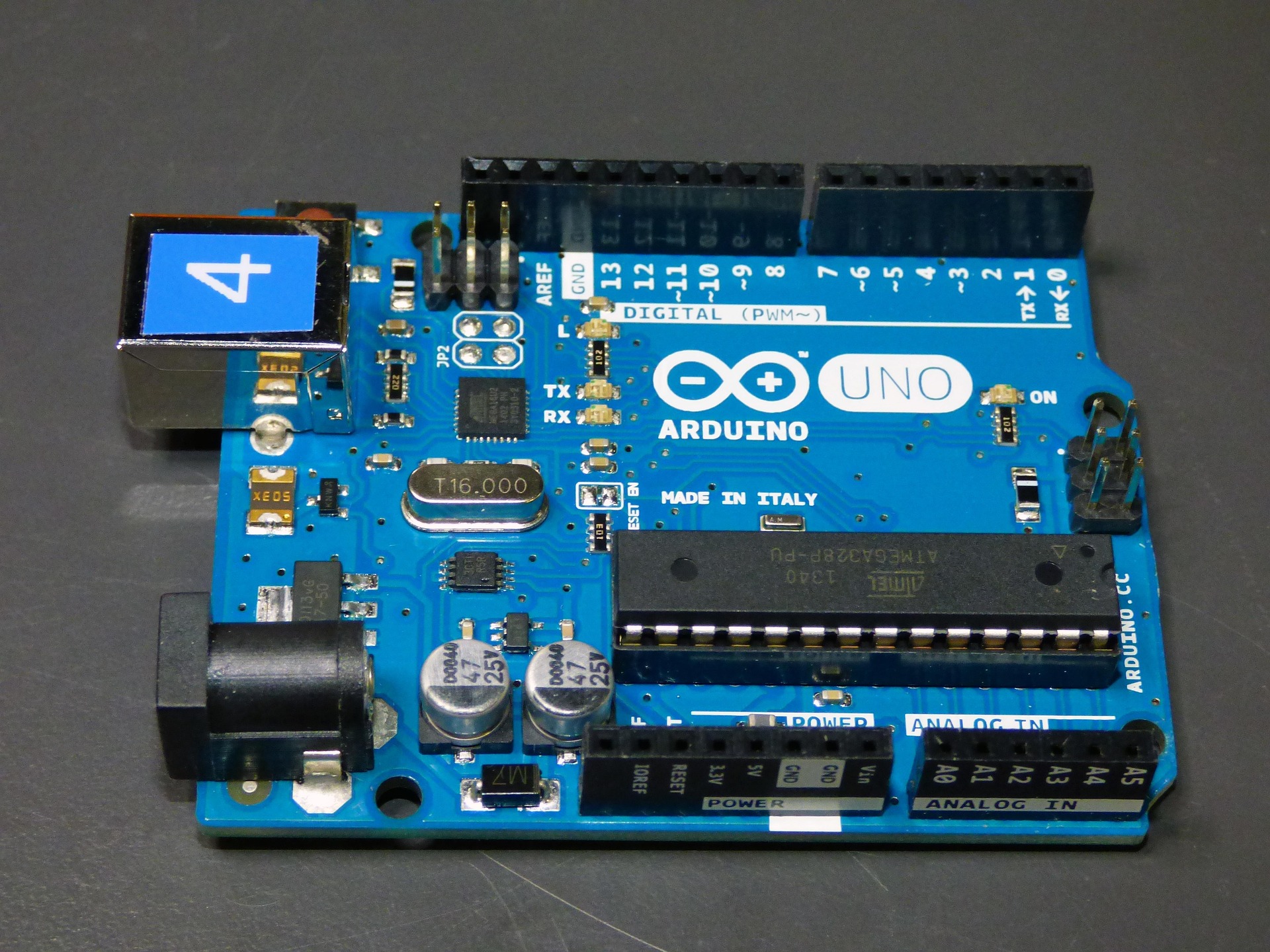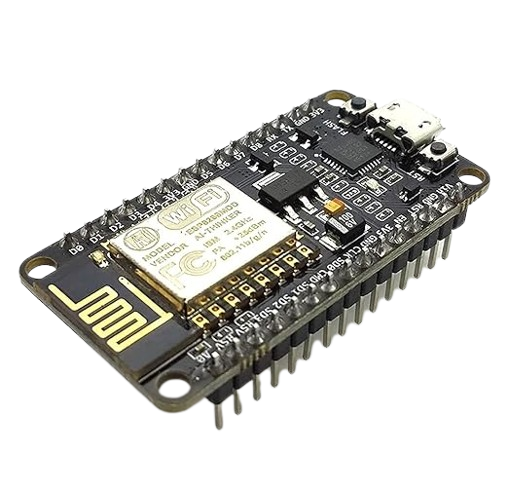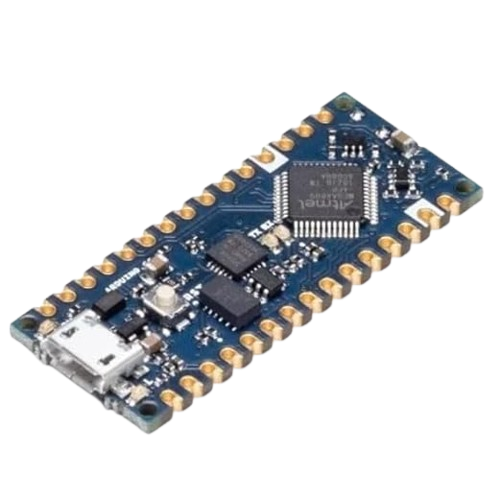MT8870 DTMF Decoder IC: Pinout, Working, Features, and Applications Explained
MT8870 is a popular DTMF decoder IC that converts dual-tone signals into digital outputs with high accuracy. Widely used in telecommunication systems, remote control circuits, and security devices, it offers reliable tone detection and decoding. This article covers the MT8870 pinout, working principle, features, and circuit applications to help students, engineers, and hobbyists understand its role in electronic projects.

Device Overview
Introduction
The MT8870 IC is a very popular and reliable DTMF (Dual Tone Multi-Frequency) decoder chip. It is mainly used to convert the sound signals produced by a telephone keypad into digital outputs. Whenever you press a key on a phone, two different audio frequencies are generated together. The MT8870 IC receives this tone, identifies the frequency pair, and converts it into a 4-bit binary code that digital circuits or microcontrollers can easily understand.
Because of its accuracy and simple design, the MT8870 has been used for many years in telecommunication systems, remote control circuits, and security devices. If you want to build electronic projects related to telephone tone decoding, this IC is one of the best and easiest choices.
What is DTMF (Dual Tone Multi-Frequency)?
Before learning about the MT8870 IC, it is important to understand DTMF. DTMF is a signaling method where each number on the telephone keypad is represented by a combination of two tones:-
One frequency from the low group
-
One frequency from the high group
-
Pressing “2” produces a combination of 697 Hz and 1336 Hz.
-
Pressing “5” produces a combination of 770 Hz and 1336 Hz.
Overview of MT8870 IC
The MT8870 is designed to receive these dual-tone signals and decode them into digital codes. Some key points:-
IC Type: DTMF decoder
-
Package: 18-pin DIP (Dual Inline Package) or SOIC
-
Input: Dual-tone signals from a phone or audio generator
-
Output: 4-bit binary code representing the pressed key
-
Use: Converting tones to digital signals for further control
MT8870 Pinout and Description
The MT8870 IC has 18 pins, each with a specific function:
-
IN+ / IN-: Differential input pins for receiving the audio signal.
-
GS: Gain Select pin for setting the input amplifier gain.
-
VRef: Reference voltage for input stage.
-
PWDN: Power-down control.
-
OSC1, OSC2: Crystal oscillator connections (generally with a 3.579 MHz crystal).
-
StD: Delayed steering output signal.
-
Est: Early steering output.
-
VDD: Power supply pin (+5V).
-
VSS: Ground pin.
-
Q1–Q4: 4-bit digital outputs.
-
TOE: Three-state output enable pin.
Internal Block Diagram and Working
The MT8870 is built from several internal blocks:-
Input Amplifier: Amplifies weak DTMF signals.
-
Band Split Filter: Separates high and low-frequency groups.
-
Digital Decoder: Identifies which pair of tones is received.
-
Latch and Output Circuit: Holds the decoded result and shows it as a 4-bit digital output.
Features of MT8870 IC
-
Operates on a single +5V supply
-
Very low power consumption
-
High accuracy in tone detection
-
Built-in gain control amplifier
-
Built-in crystal oscillator circuit (3.579 MHz)
-
TTL compatible outputs
-
Supports power-down mode
MT8870 Truth Table (DTMF to Binary Output)
| Key | Frequencies (Hz) | Output (Q4 Q3 Q2 Q1) |
|---|---|---|
| 1 | 697 + 1209 | 0001 |
| 2 | 697 + 1336 | 0010 |
| 3 | 697 + 1477 | 0011 |
| 4 | 770 + 1209 | 0100 |
| 5 | 770 + 1336 | 0101 |
| 6 | 770 + 1477 | 0110 |
| 7 | 852 + 1209 | 0111 |
| 8 | 852 + 1336 | 1000 |
| 9 | 852 + 1477 | 1001 |
| 0 | 941 + 1336 | 1010 |
| * | 941 + 1209 | 1011 |
| # | 941 + 1477 | 1100 |
Types and Alternatives
The MT8870 is the most common DTMF decoder IC, but there are similar alternatives available:-
CM8870: A CMOS version with similar functions.
-
HT9170: Used in telephone-based devices.
-
TP5089: An older DTMF decoder IC.
Applications of MT8870 IC
The MT8870 has many practical applications:-
Telephone Dialing Systems
- Converts the keypad tones into digital form for processing.
-
Remote Control Systems
- Devices can be controlled through tone commands from a phone.
-
Security and Access Control
- Unlocking systems using keypad tone codes.
-
Telecommunication Equipment
- Call routing and interactive systems.
-
Educational Kits and Training
- Useful for students to learn about tone decoding.
-
Automation Projects
- Controlling lights, motors, or appliances via keypad tones.
Example Circuit of MT8870
Components Required
- MT8870 IC
- 3.579 MHz crystal oscillator
- Capacitors: 33 pF (2 pieces)
- Resistors: 100kΩ, 10kΩ
- Power supply: +5V
- LEDs for digital output display
Circuit Working
- The audio tone is applied at the input pins IN+ and IN-.
- The internal amplifier and filters process the signal.
- The decoder identifies the tone pair.
- The output Q1–Q4 provides the binary number.
- LEDs connected to outputs glow in a pattern that shows the binary equivalent of the pressed key.
Practical Example
Let’s say the user presses the number “5” on a telephone keypad:
-
The tone generated is 770 Hz + 1336 Hz.
- MT8870 receives the signal and detects the frequency pair.
-
The output pins Q4–Q1 show 0101.
- A microcontroller or display system can then read this output as the number “5”.
Advantages of Using MT8870
- Accurate DTMF detection.
- Requires very few external components.
- Easy to interface with microcontrollers.
- Works reliably with standard telephone tones.
- Cost-effective solution for DTMF decoding.
Conclusion
The MT8870 IC is a simple, efficient, and reliable solution for decoding DTMF tones into digital outputs. It is widely used in telecommunication devices, security systems, and remote-control projects. With features like built-in oscillator, TTL outputs, and high accuracy, it is one of the most trusted ICs in tone decoding applications.
Where to Buy
| Platform | Price | Action |
|---|---|---|
|
|
₹240 | Buy Now |
Prices may vary. Click on "Buy Now" to check current availability and pricing.
Administrator
Frequently Asked Questions
Common questions about MT8870 DTMF Decoder IC: Pinout, Working, Features, and Applications Explained. Find answers to the most frequently asked questions.
User Reviews & Comments
Share your experience with this IoT device. Your feedback helps our community make informed decisions!
Share Your Experience
Help others by sharing your thoughts about this IoT device.
Related Devices
Explore more IoT devices in the same category
Arduino Uno is a beginner-friendly microcontroller board based on ATmega328P, ideal for IoT and electronics projects. This guide covers its features, specifications, and practical applications to help you build smart systems easily and efficiently.

What is ESP32 in IoT?
Microcontroller
Discover the complete guide to ESP32 with detailed pinout, specifications, and project ideas. Learn how to use ESP32 for embedded systems, automation, smart devices, and real-time applications. Ideal for developers, engineers, and students looking for fast and efficient IoT development. Unlock the power of ESP32 in your next smart project.
This guide covers proven strategies to create technical content that drives traffic, increases visibility. Whether you're a beginner or a seasoned blogger, learn how to write about ESP8266, keyword placement, and reader engagement — without compromising content quality.
Arduino Nano is a powerful, compact board ideal for beginners and experts to create innovative projects, smart applications, and real-world solutions.

Explore the complete technical guide on STM32 microcontrollers, covering key features, pinout details, architecture overview, and step-by-step programming with example code. Ideal for embedded system developers and electronics engineers seeking in-depth STM32 knowledge. This article offers clear, accurate, and professional insights to help you get started with STM32-based development.



No Reviews Yet
Be the first to share your experience with this IoT device!